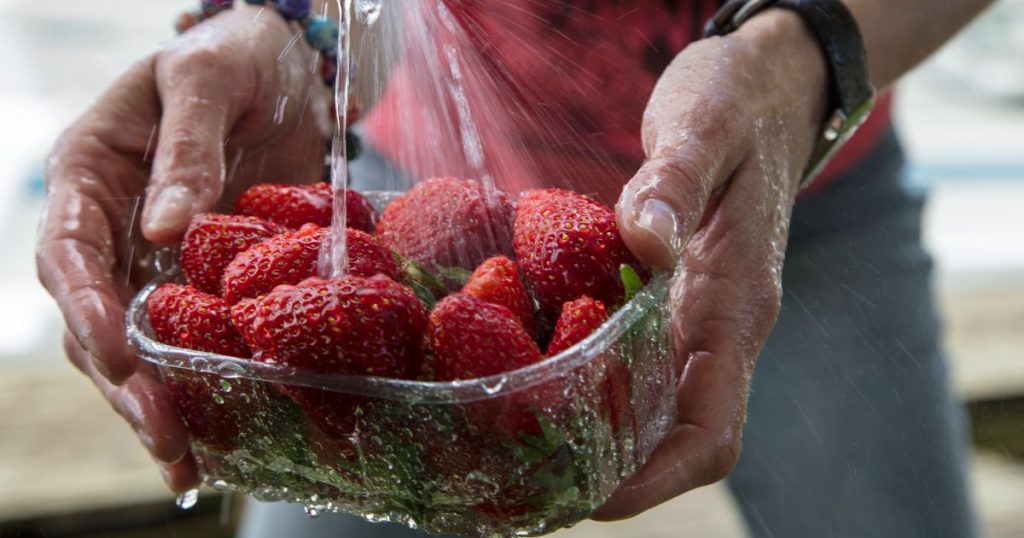To ensure that we are removing residual pesticides from our summer fruits and vegetables, many individuals have turned to TikTok trends and specialty produce washes. However, experts suggest that plain tap water is the most effective method for cleaning produce, as it can effectively remove germs and pesticides. Soaking fruits and vegetables in water is discouraged, as it can spread contamination. It is important to wash produce with crevices, rough surfaces, and leaves more thoroughly, using a produce brush if necessary.
Using soap, detergent, or store-bought produce washes on fruits and vegetables is not recommended, as these items can be absorbed by the produce and lead to illness. Organic produce is the best way to avoid pesticides, as it is not treated with artificial pesticides. Even if you do not plan to eat the skin of certain produce items, washing them is still important to reduce the transfer of dirt and bacteria. Scrubbing and gently rubbing produce can help to remove dirt, bacteria, and some pesticide residues, improving the effectiveness of plain water cleaning.
For those who struggle with produce going bad before they can consume it, there are several helpful items that can assist with storage and preservation. These include clear, stackable containers, reusable silicone bags, and fruit hammocks. Being diligent with meal planning and grocery lists can also help to ensure that produce is consumed before it spoils. Turning sad produce into smoothies or using a juicer to extract the juice can be a good way to use up fruits and vegetables that are starting to go bad. Pickling, preserving, or fermenting produce can also be a fun home project that extends the life of fruits and vegetables.


